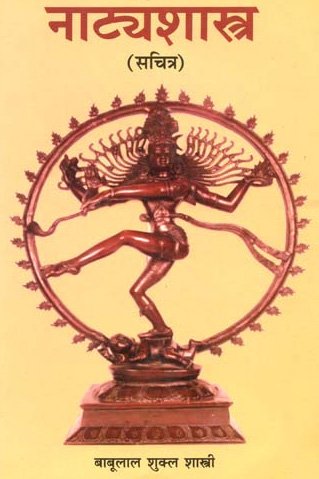Ratika, Ratikā: 6 definitions
Introduction:
Ratika means something in Hinduism, Sanskrit. If you want to know the exact meaning, history, etymology or English translation of this term then check out the descriptions on this page. Add your comment or reference to a book if you want to contribute to this summary article.
In Hinduism
Natyashastra (theatrics and dramaturgy)
Source: Wisdom Library: SaṅgītaśiromaṇiRatikā (रतिका) refers to one of the twenty-two quarters tones (śruti) existing within an octave, according to the Saṅgīta-ratnākara (“ocean of music and dance”). This work is an important Sanskrit treatise dealing with ancient Indian musicology (gāndharva-śāstra), composed by Śārṅgadeva in the 13th century and deals with both Carnatic and Hindustani music. Ratikā has a frequency of 290.6951Hz. It is also known as Raktikā.

Natyashastra (नाट्यशास्त्र, nāṭyaśāstra) refers to both the ancient Indian tradition (shastra) of performing arts, (natya—theatrics, drama, dance, music), as well as the name of a Sanskrit work dealing with these subjects. It also teaches the rules for composing Dramatic plays (nataka), construction and performance of Theater, and Poetic works (kavya).
Shilpashastra (iconography)
Source: archive.org: Illustrations of Indian Music and Dance in Western Indian StyleRatikā (रतिका, “loving”).—Illustration of Ratikā-śruti according to 15th century art:—The colour of her body is yellow. She holds a vīṇā with both hands. The colour of her bodice is blue. Her scarf is rosy with a red design, the lower garment is blue with a black design and golden lotus.
The illustrations (of, for example Ratikā) are found scattered throughout ancient Jain manuscripts from Gujarat. The descriptions of these illustrations of this citrāvalī are based on the ślokas of Vācanācārya Gaṇi Sudhākalaśa’s Saṅgītopaniṣatsāroddhāra (14th century) and Śārṅgadeva’s Saṅgītaratnākara (13th century).

Shilpashastra (शिल्पशास्त्र, śilpaśāstra) represents the ancient Indian science (shastra) of creative arts (shilpa) such as sculpture, iconography and painting. Closely related to Vastushastra (architecture), they often share the same literature.
Languages of India and abroad
Sanskrit dictionary
Source: Cologne Digital Sanskrit Dictionaries: Edgerton Buddhist Hybrid Sanskrit DictionaryRatika (रतिक).—name of a yakṣa: Mahā-Māyūrī 53.
Source: Cologne Digital Sanskrit Dictionaries: Monier-Williams Sanskrit-English Dictionary1) Ratikā (रतिका):—[from ram] f. (in music) a kind of Śruti, [Saṃgīta-sārasaṃgraha]
2) Rāṭikā (राटिका):—[from rāṭi] f. See mṛga-rāṭikā.
[Sanskrit to German]
Sanskrit, also spelled संस्कृतम् (saṃskṛtam), is an ancient language of India commonly seen as the grandmother of the Indo-European language family (even English!). Closely allied with Prakrit and Pali, Sanskrit is more exhaustive in both grammar and terms and has the most extensive collection of literature in the world, greatly surpassing its sister-languages Greek and Latin.
See also (Relevant definitions)
Starts with: Ratikale, Ratikamapuja, Ratikanta, Ratikantatarkavagisha, Ratikara, Ratikarayuvati, Ratikari, Ratikarma, Ratikarman, Ratikashruti, Ratikati.
Ends with (+85): Adhyardhapratika, Adityavratika, Akhilandastotratika, Andhratika, Apratika, Aratika, Asampratika, Ativratika, Aviratika, Avratika, Baidalavratika, Bakavratika, Barhahpatyasutratika, Barhaspatyasutratika, Bharatika, Bidalavratika, Candidamaratika, Candravratika, Caratika, Carupratika.
Full-text: Goratika, Jaradyosha, Gorika, Aratika, Mrigaratika, Ratikashruti, Ratikara, Raktika, Shruti, Kamya.
Relevant text
No search results for Ratika, Ratikā, Rāṭikā; (plurals include: Ratikas, Ratikās, Rāṭikās) in any book or story.